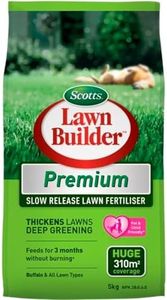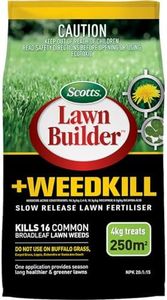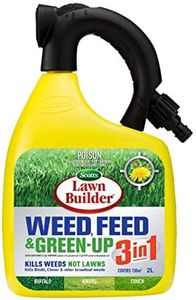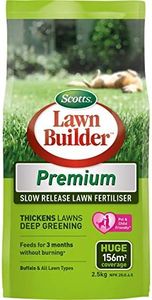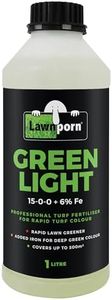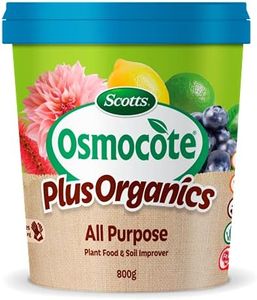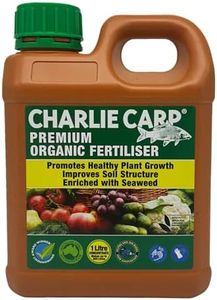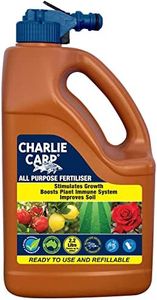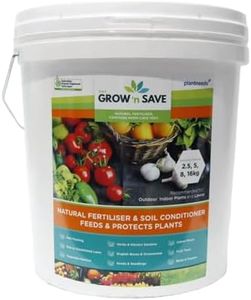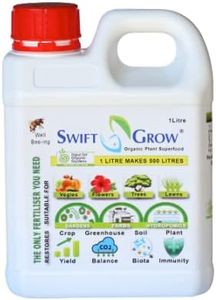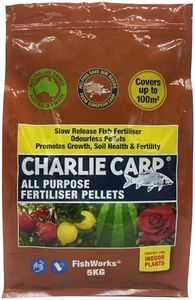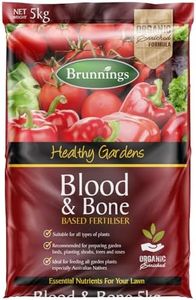We Use CookiesWe use cookies to enhance the security, performance,
functionality and for analytical and promotional activities. By continuing to browse this site you
are agreeing to our privacy policy
10 Best Organic Lawn Fertilizers
From leading brands and best sellers available on the web.Buying Guide for the Best Organic Lawn Fertilizers
Organic lawn fertilizers are a great choice for those looking to maintain a healthy, green lawn while also being environmentally friendly. When choosing an organic fertilizer, it’s important to understand not just how it feeds your grass, but also how it affects soil health and the ecosystem in your yard. Understanding key specifications will help you select the best product for your lawn's specific needs, whether you’re aiming for deep green grass, building soil fertility, or ensuring safe play for kids and pets.NPK RatioThe NPK ratio stands for Nitrogen (N), Phosphorus (P), and Potassium (K), which are the three main nutrients in fertilizer. Nitrogen encourages green leaf growth, phosphorus supports root and flower growth, and potassium helps the overall health and disease resistance of your grass. Organic fertilizers list their NPK as numbers like 4-2-2. Higher nitrogen numbers are good for lush, green lawns, while more balanced mixes are better for general health. For established lawns, look for products with more nitrogen and less phosphorus. Match the NPK ratio with your lawn’s current needs and soil test results if available.
Source of NutrientsOrganic fertilizers are usually made from natural ingredients like composted manure, bone meal, alfalfa meal, or seaweed. The source can affect how quickly nutrients become available to your grass and how safe the product is for pets and wildlife. Some sources feed the lawn quickly, while others release nutrients slowly over time. If safety or environmental impact is a top concern, look for fertilizers with clearly listed, recognizable ingredients and certifications like OMRI (Organic Materials Review Institute) listing.
Release SpeedThis refers to how quickly the fertilizer provides nutrients to your lawn. Organic fertilizers are usually 'slow-release,' meaning nutrients are slowly made available as soil microbes break down the material. This provides steady growth and reduces the risk of burning your grass. A slow-release fertilizer is ideal for most lawns because it feeds for weeks or months and supports long-term soil health. If you need quick results, look for blended products with both fast and slow-release content, but prioritize slow-release for most home lawns.
Application MethodOrganic fertilizers come in various forms such as pellets, granules, or liquids. Granules and pellets are easy to spread by hand or with a spreader and are great for covering large lawns. Liquid fertilizers act faster but may need to be applied more often and can be less convenient for larger areas. Consider how much effort you want to put into application and choose a form that matches the size of your lawn and your comfort with spreading the fertilizer.
Safety and Environmental ImpactSince one of the main reasons for going organic is to reduce harm to the environment and make your lawn safe for kids and pets, it’s important to check for safety guarantees and eco-friendly claims. Some products specifically state they are safe for children and animals immediately after use, while others may recommend waiting a bit. Choose fertilizers with clear, reputable certifications and ingredient transparency if safety is your primary concern.
Added Soil AmendmentsSome organic lawn fertilizers also include soil conditioners like humic acid or beneficial microbes. These extras help improve soil structure, water retention, and root development, which can be a big help if your lawn is struggling in poor or compacted soil. If your main goal is to boost overall soil health as well as grass growth, consider products labeled as 'lawn food and soil builder' or those that mention extra microbial content.
